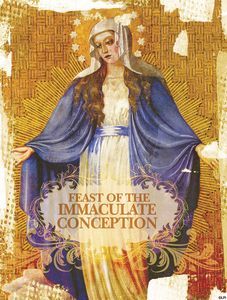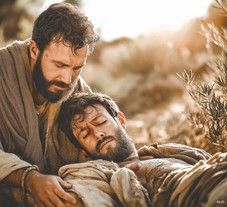Beloved Family,
This is First Communion weekend here at Saint Mary. On this occasion, let us consider a question: what does hardened brown sugar have to teach us, in relationship to the Holy Eucharist? Last weekend, I was enjoying some time with Deacon Bob and Lee Zerrer—a beautiful couple in our community. During dinner, I mentioned that I had a bag of brown sugar that, at this point, could be a lethal weapon—hard as rock and apparently impermeable to any effort to “break it up” on the floor or counter. I indicated that I would be disposing of it. In response, Lee said, “Just put a piece of bread in with it, and that will soften it”. I carried out her suggestion, and sure enough within a couple of days, the whole bag of brown sugar had softened.
It occurs to me: if a piece of ordinary bread can soften a bag of rock-hard sugar, then imagine the power of the Holy Eucharist—ANYTHING BUT “ordinary bread”—to soften all that is hardened within us. This requires of us, however, that we truly yield to its power and not consider it a symbol or just a custom we carry out in worship, little different from any church that has some form of “communion.” Here are words from Pope Francis:
Regarding the Holy Mass, one sometimes hears this objection: “Of what use is Mass? I go to Church when I feel like it, and I pray better in solitude”. But the Eucharist is not a private prayer or a beautiful spiritual exercise, it is not a simple commemoration of what Jesus did at the Last Supper. We say, in order to fully understand, that the Eucharist is “a remembrance”, that is, a gesture which renders real and present the event of Jesus’ death and resurrection: the bread really is his Body given up for us, the wine really is his Blood poured out for us.
The Eucharist is Jesus himself who gives himself entirely to us. Nourishing ourselves of Him and abiding in Him through Eucharistic Communion, if we do so with faith, transforms our life, transforms it into a gift to God and to our brothers and sisters. Nourishing ourselves of that “Bread of Life” means entering into harmony with the heart of Christ, assimilating his choices, his thoughts, his behaviour. It means entering into a dynamism of love and becoming people of peace, people of forgiveness, of reconciliation, of sharing in solidarity. The very things that Jesus did.
Jesus concludes his discourse with these words: “he who eats this bread will live for ever” (Jn 6:58). Yes, living in real communion with Jesus on this earth lets us pass from death to life. Heaven begins precisely in this communion with Jesus. [Angelus Address, August 16, 2015]
Let us pray for our children receiving First Holy Communion—and their families. May all that has become hardened in us be softened—healed and transformed— by the power of the Bread of Life!
Let His Peace be with you,
Fr. Stephen













